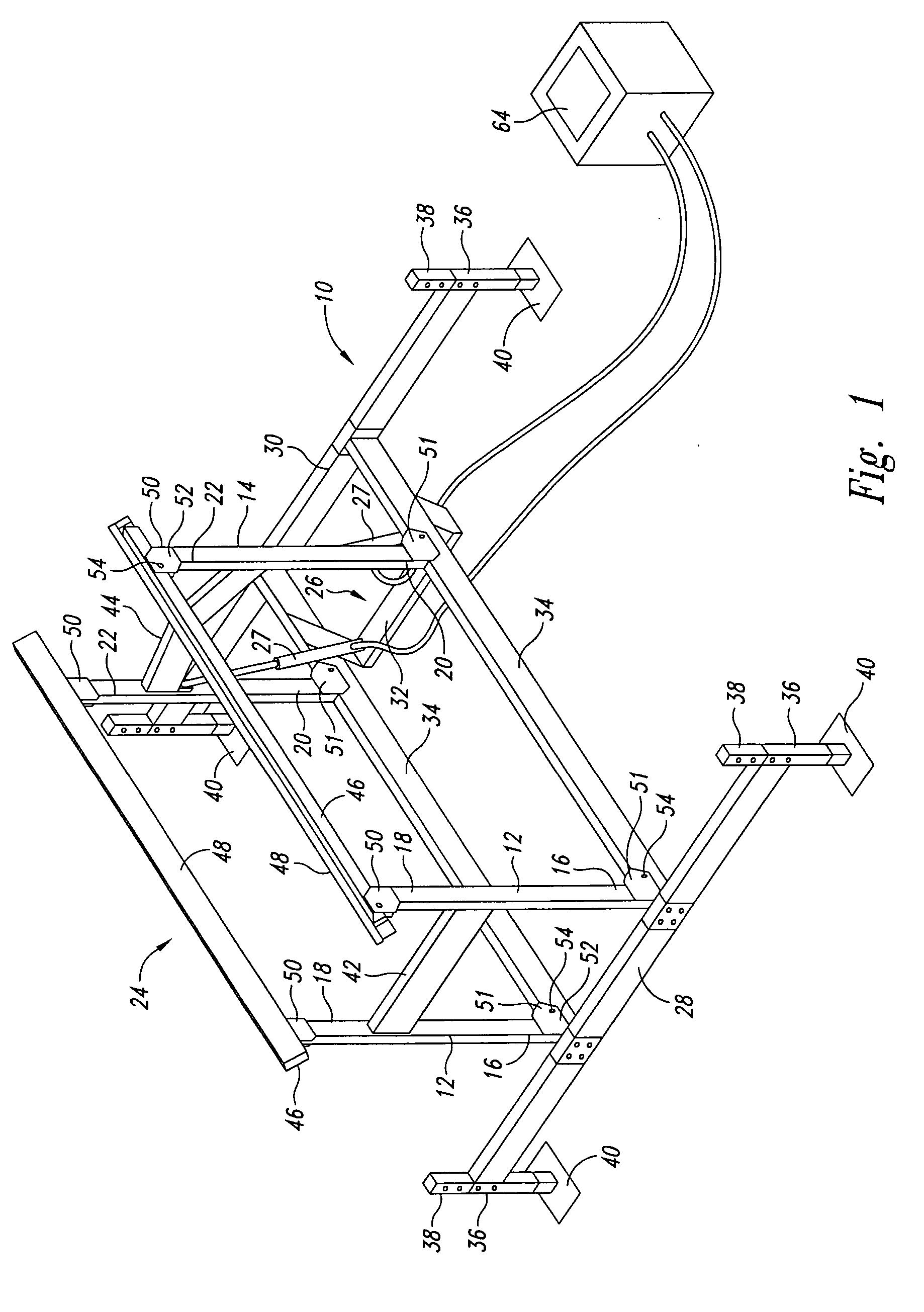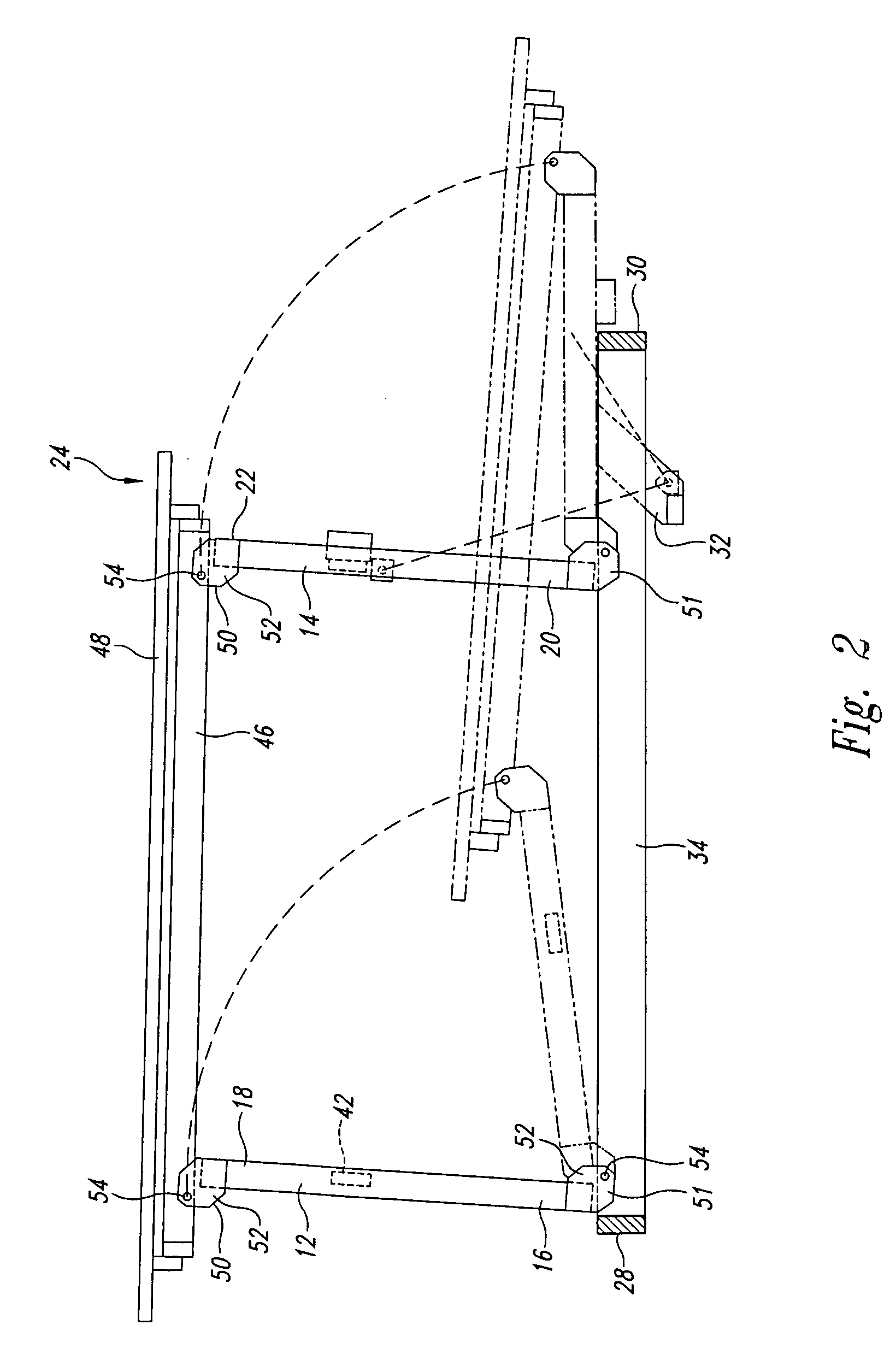Shallow water watercraft lift
a technology for watercraft and shallow water, applied in special-purpose vessels, floating buildings, transportation and packaging, etc., can solve the problems of not sufficiently addressing problems, watercraft may be subject, and existing watercraft lifts,
- Summary
- Abstract
- Description
- Claims
- Application Information
AI Technical Summary
Benefits of technology
Problems solved by technology
Method used
Image
Examples
Embodiment Construction
[0029] This description illustrates aspects of the invention, and describes embodiments of the invention. This description is not intended to be exhaustive, but rather to inform and teach the person of skill in the art who will come to appreciate more fully other aspects, equivalents, and possibilities presented by the invention. The scope of the invention is set forth in the claims, which alone limit its scope.
[0030] The embodiments are set forth in the following description and in FIGS. 1 through 12. One skilled in the art will understand that the present invention may be practiced without using all of the details described herein. In the following description, it is understood that a watercraft includes any vehicle that is at least partially waterborne, including boats and similar vessels, but may also include amphibious vehicles, including various amphibious automobiles or aircraft. Moreover, in the description that follows, it is understood that the figures related to the vari...
PUM
 Login to View More
Login to View More Abstract
Description
Claims
Application Information
 Login to View More
Login to View More - R&D
- Intellectual Property
- Life Sciences
- Materials
- Tech Scout
- Unparalleled Data Quality
- Higher Quality Content
- 60% Fewer Hallucinations
Browse by: Latest US Patents, China's latest patents, Technical Efficacy Thesaurus, Application Domain, Technology Topic, Popular Technical Reports.
© 2025 PatSnap. All rights reserved.Legal|Privacy policy|Modern Slavery Act Transparency Statement|Sitemap|About US| Contact US: help@patsnap.com



